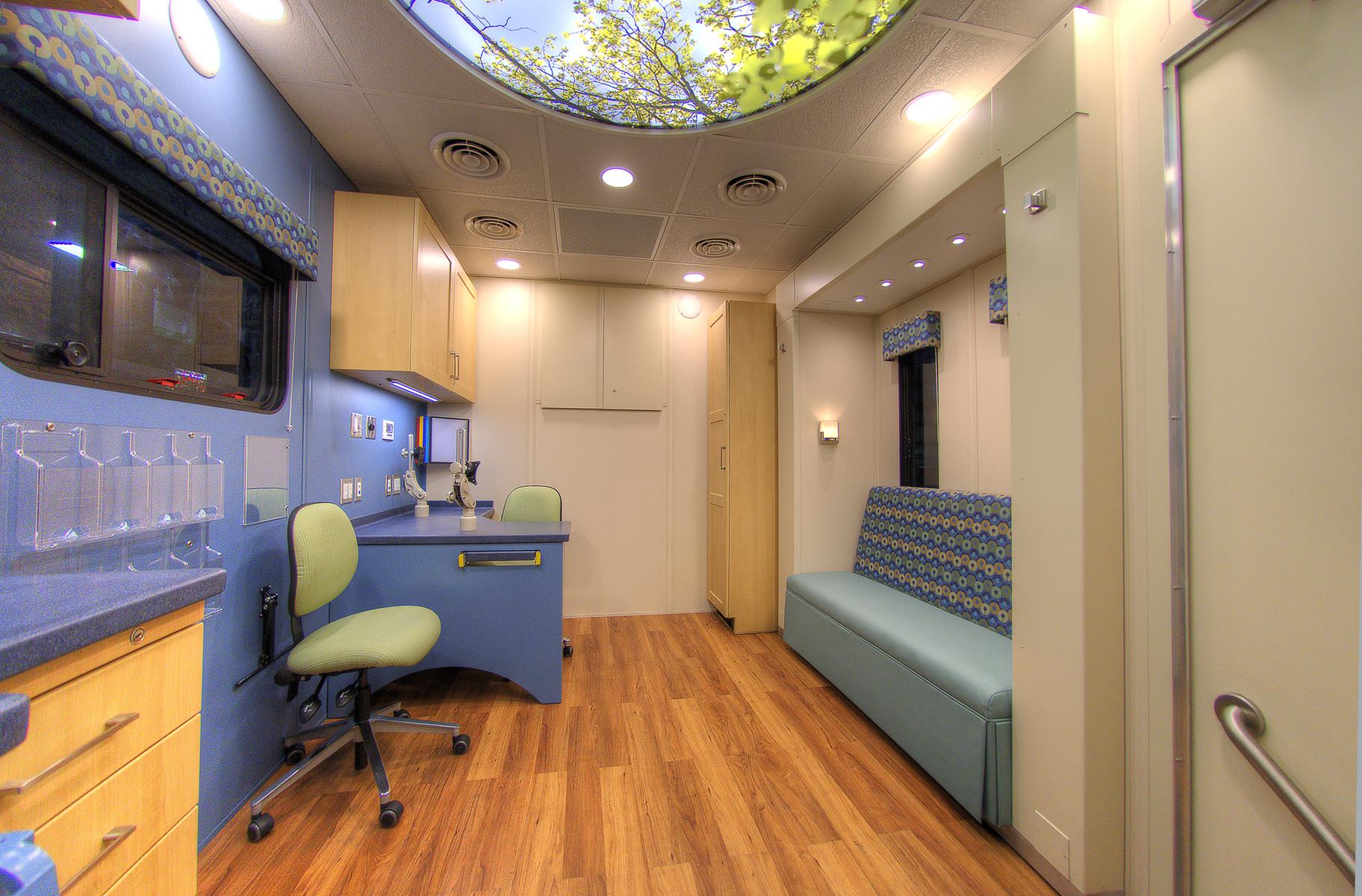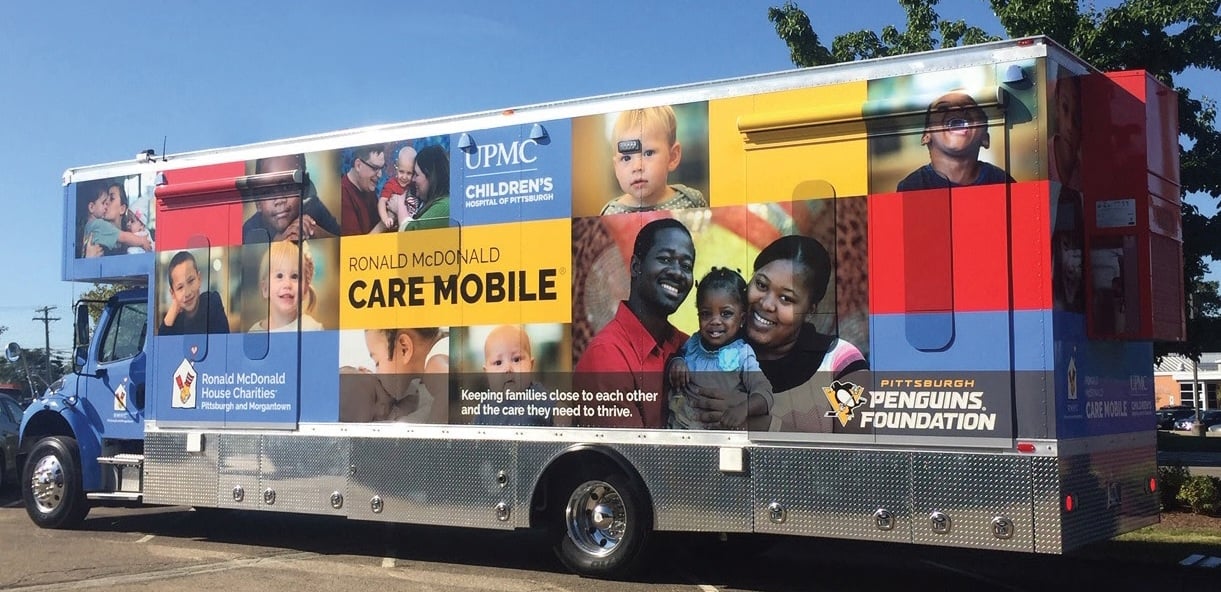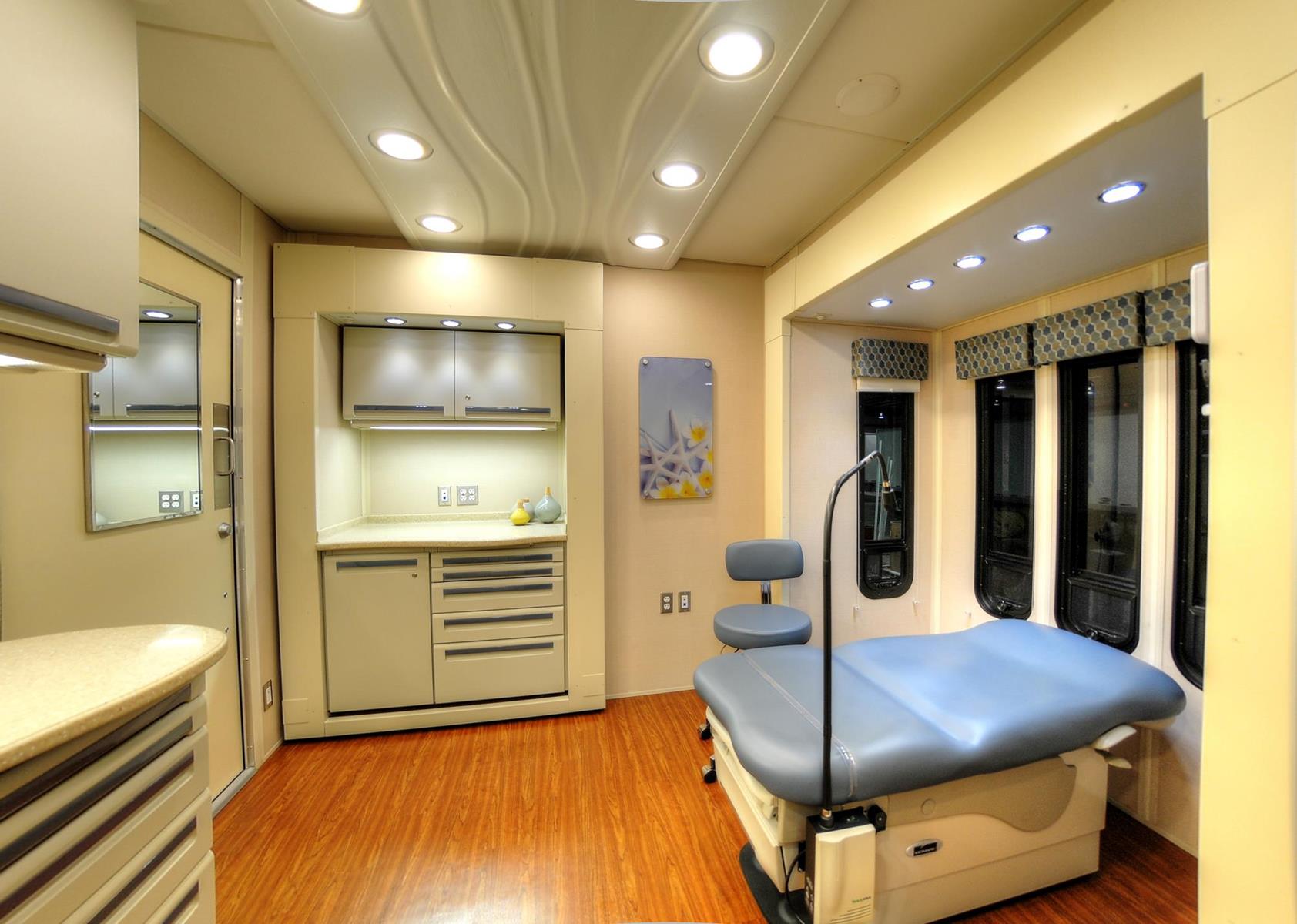It’s important for the health and safety of your community to keep your mobile health clinic operating during the COVID-19 health crisis. However, the confines of a mobile clinic can be perceived as a fearful environment for some health care providers and patients. To address these concerns advancements have been made in developing several methods to protect medical staff and the public while inside a mobile clinic.
Three primary safeguards have been developed that provide mitigation of these concerns and improve air quality. Note: Not all of these solutions are applicable to all mobile clinics. Therefore any individual clinic must be evaluated to establish the potential best solution.
In-Duct far-UVC Lighting
Far-UVC light efficiently and safely inactivates airborne human coronaviruses. Far-UVC lights have a high kill rate for airborne mold, bacteria and viruses. Germicidal UV light is a well-established technology used for sterilization, sanitation and purification. Certain UV lights can

UV duct kits have been designed to realize all the benefits of germicidal UV light in limited spaces in conjunction with most furnace and air conditioning fan coil units. These kits feature a low-profile lamp with metal shield for safe optimum UV exposure. The UV light is concealed in the main duct of the mobile vehicle’s HVAC system and is not noticeable to the mobile clinic’s occupants.
 By circulating the air inside the mobile health clinic when the HVAC fan is on, whether fresh or re-circulating, it is forced to pass by the UV light and through the HEPA filter on a continuous basis. The constant UV conditioning of the air is an ideal opportunity to fight mold, bacteria and viral conditions. In many cases it also reduces the non-ozone producing odor that can be present. This UV duct kit is inexpensive and easily retrofitted to your mobile medical clinic with some modest ductwork and electrical wiring in accordance with LifeLine’s instructions.
By circulating the air inside the mobile health clinic when the HVAC fan is on, whether fresh or re-circulating, it is forced to pass by the UV light and through the HEPA filter on a continuous basis. The constant UV conditioning of the air is an ideal opportunity to fight mold, bacteria and viral conditions. In many cases it also reduces the non-ozone producing odor that can be present. This UV duct kit is inexpensive and easily retrofitted to your mobile medical clinic with some modest ductwork and electrical wiring in accordance with LifeLine’s instructions.
On-Wall Add-On HEPA-UVC
This new air filtration safeguard is a 20 x 25 inch wall mounted unit that combines four stages of filtration:
- A pre-filter
- A HEPA filter
- A carbon filter layer
- A powerful UVC light
On-Wall Add-On HEPA-UVC units are all in one and easy to hang. This self contained package  simply plugs into the wall like any small appliance. The unit contains a high-intensity UVC germicidal lamp which neutralizes and reduces airborne mold, bacteria and viruses. It also stops allergy and asthma-causing dust, dander, pollen, mold and many other airborne particles.
simply plugs into the wall like any small appliance. The unit contains a high-intensity UVC germicidal lamp which neutralizes and reduces airborne mold, bacteria and viruses. It also stops allergy and asthma-causing dust, dander, pollen, mold and many other airborne particles.
The HEPA-UVC unit operates by pulling in outside air with a powerful adjustable-speed fan that forces the air past the HEPA filtration and UVC light. It then circulates the clean air back into the mobile unit. In a typical exam space the highest setting will cycle all of the room air every 90 seconds, which is 40 times per hour. Most hospitals only require 6 air exchanges per hour. Therefore the On-Wall HEPA-UVC unit can be set at nearly silent medium-speed and achieve more than triple that of typical hospital air exchange rates.
In-Ceiling far-UVC Lighting
Another highly effective and safe method for clean air in your mobile health clinic is a far-UVC recessed overhead ceiling light that is illuminated during or in between patient visits. Far-ultraviolet C light has the correct energy to break apart organic molecular bonds. As harmful germs and tiny organisms pass through the far-UVC light their molecular structure is broken down with genetic damage which prevents them from reproducing. “Based on our results, continuous airborne disinfection with far-UVC light at the current regulatory limit could greatly reduce the level of airborne virus in indoor environments occupied by people,” says David Brenner, PhD, Higgins Professor of Radiation Biophysics at Columbia University Vagelos College of Physicians and Surgeons and director of the Center for Radiological Research at Columbia University Irving Medical Center. These ceiling-mounted fixtures can be wired into the normal fixture array and provide visible light that’s safe for staff and patients.


DISCLAIMER: Lifeline Mobile, Inc. does not assume any liability for the consequences arising out of the application, use, or misuse of any products contained in this communication including any injury and/or damage to any person or property as a matter of product liability, negligence, or otherwise. Nothing in this blog post should be construed as advice on the treatment of any disease. This information should not be considered final and is not a substitute for the advice of professional health care providers.